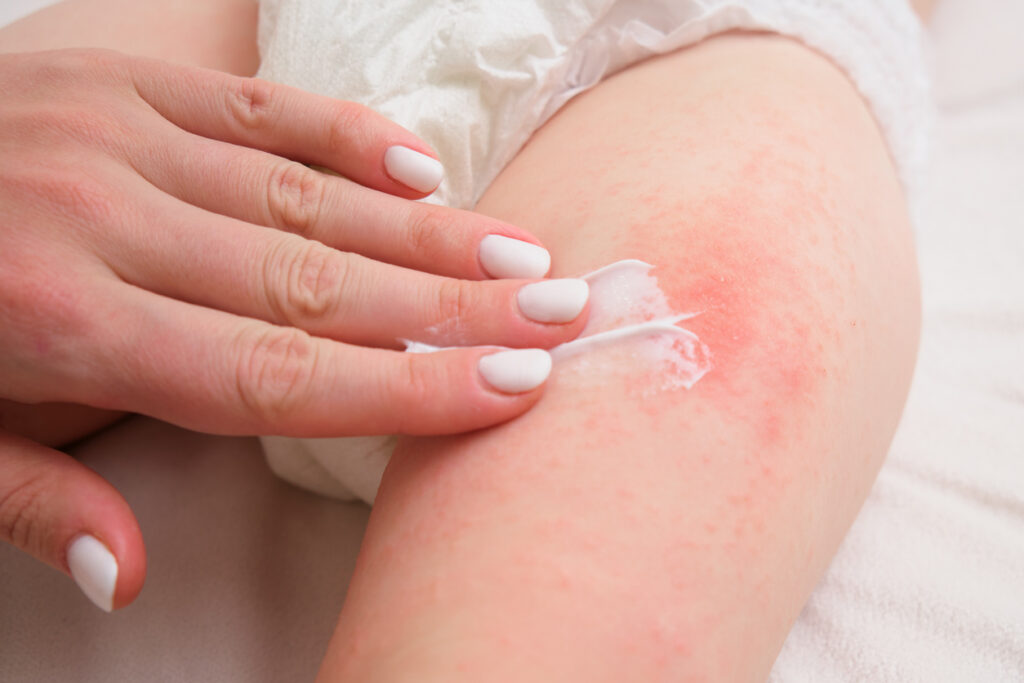Tapinarof cream, 1% (Vtama, Dermavant) demonstrated a high rate of complete disease clearance in atopic dermatitis (AD), with more than half of enrolled adults and children entering with or achieving a Validated Investigator Global Assessment for Atopic Dermatitis (vIGA-AD) score of zero at least once, on monotherapy, according to the ADORING 3 open-label, long-term extension study.
The data was presented at the 2024 Fall Clinical Dermatology Conference in Las Vegas, NV.
“Moreover, upon reaching complete disease clearance and ceasing treatment, patients stayed clear or almost clear for an average period of approximately 80 consecutive days. These results, combined with those from the ADORING 1 and ADORING 2 pivotal studies, demonstrate VTAMA cream’s potential ability to not only effectively and safely treat patients as young as 2 years of age with atopic dermatitis, but may also enable a majority to achieve complete disease clearance, and maintain either clear or almost clear skin for an average of over 2 and a half months while off all treatment,” says Robert Bissonnette, MD, FRCPC, Chief Executive Officer at Innovaderm Research, in a news release.
Tapinarof cream, 1% is a novel, aryl hydrocarbon receptor agonist in development in the U.S. for AD. It is currently approved for the topical treatment of plaque psoriasis in adults in the U.S. In April 2024, the U.S. Food and Drug Administration (FDA) accepted the company’s Supplemental New Drug Application (sNDA) for tapinarof cream, 1% for the topical treatment of AD in adults and children 2 and older. The Prescription Drug User Fee Act (“PDUFA”) action date assigned by the Agency is in Q4 2024.
ADORING 1 and ADORING 2 were two identical, double-blind, randomized, vehicle-controlled Phase 3 studies that evaluated the efficacy and safety of tapinarof cream, 1% in adults and pediatric patients as young as 2 with AD who had a vIGA-AD score of 3 (moderate) to 4 (severe) at baseline. ADORING 3, a 48-week open-label, long-term extension (LTE) study, enrolled eligible patients from ADORING 1, ADORING 2, a 4-week maximal usage pharmacokinetics study, and tapinarof cream-naive patients aged 2–17 with either mild, moderate or severe AD that did not meet inclusion in ADORING 1 and ADORING 2.
In ADORING 3, patients were followed for up to 48 weeks, with safety and tolerability endpoints that included treatment emergent adverse events, adverse events of special interest, investigator-assessed and patient/caregiver-assessed local tolerability, and efficacy endpoints that included the achievement of complete disease clearance (vIGA-AD=0), and the achievement of clear or almost clear skin (vIGA-AD=0 or 1). Patients entering with any disease activity (vIGA-AD≥1) were treated with tapinarof cream, 1%until complete disease clearance was achieved (vIGA-AD=0). Those entering with or achieving complete clearance (vIGA-AD=0) discontinued tapinarof cream, 1% and were followed to measure the treatment-free interval, defined as the maintenance of clear or almost clear skin (vIGA-AD=0 or 1) for consecutive days while no longer receiving any treatment for AD. Patients whose AD returned to mild or above (vIGA-AD≥2) were re-treated until complete disease clearance (vIGA-AD=0) was achieved again. ADORING 3 reinforced the safety and tolerability of tapinarof cream, 1% demonstrated in ADORING 1 and ADORING 2.
Deep Dive Into ADORING 3 LTE
Fully 728 patients were enrolled in ADORING 3, and 83.0% were pediatric patients (2–17 years) proportionally balanced across defined pediatric age groups. Overall, 51.9% of patients entered with or achieved complete disease clearance (vIGA-AD=0) at least once during the 48-week study, while 81.6% entered with or achieved clear or almost clear skin (vIGA-AD=0 or 1) at least once during the 48-week study.
After entering with or first achieving complete disease clearance and discontinuing tapinarof cream, 1% treatment (n=378), the average duration of the first treatment-free interval was 79.8 consecutive days (with a standard deviation of 81.4 days).
After achieving vIGA-AD=0 and discontinuing tapinarof cream, 1%, patients whose vIGA-AD returned to ≥2 (mild or above) off-treatment could regain vIGA-AD=0 when re-treated.
There was no evidence of tachyphylaxis in patients receiving either continuous or intermittent therapy of tapinarof cream, 1% was observed for up to 48 weeks. Most treatment-emergent adverse events (TEAEs) were mild or moderate; the most frequent were folliculitis (12.1%), nasopharyngitis (6.9%), and upper respiratory tract infection (6.9%). Study discontinue rate due to TEAEs were low (2.6%).
Adverse events of special interest (AESI), follicular events, contact dermatitis, and headache were mostly mild or moderate and associated with low study discontinuation rates (1.0%, 0.4%, and 0% respectively). There was no study discontinuation due to headache.
Tapinarof cream, 1% was well tolerated, even when applied to affected sensitive skin areas, including the face (n=374) and neck (n=398).


